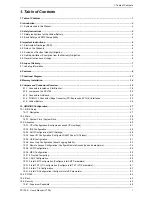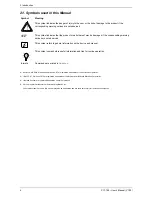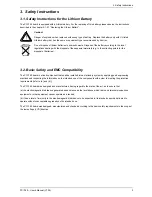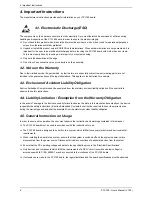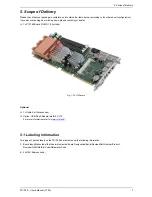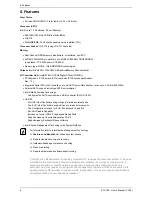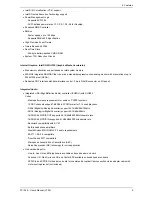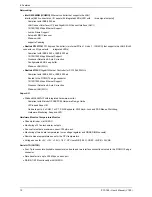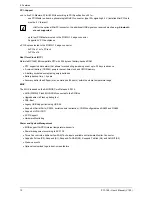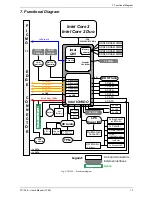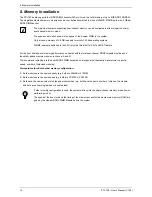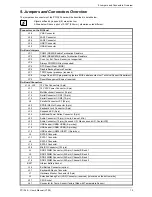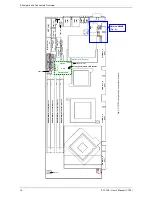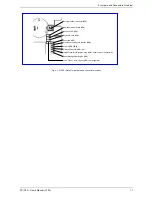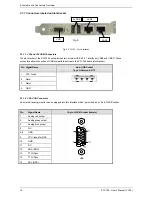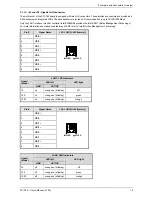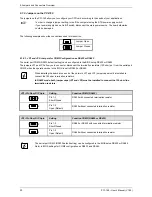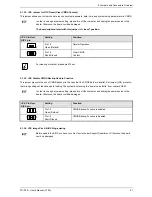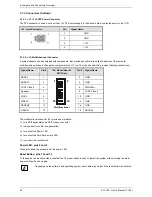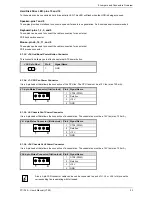
6. Features
8
PCI-760 – User’s Manual (V1.00)
6.
Features
Form Factor:
•
Full size SHB PICMG 1.3 form factor (13.33 x 4.98 inch).
Processor (CPU):
Intel® Core™ 2 Duo/Quad, 65 nm (Desktop)
•
800/1066/1333 MHz FSB (Front Side BUS)
•
LGA775
•
2MB/4MB/8MB, L2 Cache (depending on the installed CPU)
Processor Socket: LGA 775 (using LGA 771 heat sink)
Memory
•
Dual-Channel DDR2 memory architecture, un-buffered, non-ECC
•
4x DDR2 DIMM 240-pin slots for up to 8GB 667/800 MHz DDR2 SDRAM
(use please: PC2-5300 and/or PC2-6400)
•
Memory type: 512Mb, 1Gb DDR2 DRAM technologies
Chipset: Intel® Q35 GMCH (Graphics Memory Controller Hub)
I/O Controller Hub: Intel® 82801IO [ICH9 Digital Office (ICH9DO)]
•
PCI Express: 5 PCI Express (PCIe) root ports (PCI Express specification
Rev.
1.1)
•
Integrated Serial ATA Host Controller: up to six SATA ports; Data transfer rates up to 3.0 Gb/s (300 MB/s)
•
External SATA support including eSATA port multiplier
•
Intel® Matrix Storage Technology
- Configures the SATA controller as a RAID controller (RAID 0/1/5/10)
•
USB 2.0
- Six UHCI Host Controllers, supporting up to twelve external ports
- Two EHCI Host Controllers, supporting up to twelve external ports
- Two Configuration Options for EHCI Controllers 6+6 and 8+4
- Per-Port-Disable Capability
- Includes up to two USB 2.0 High-speed Debug Ports
- Supports wake-up from sleeping states S1–S5
- Supports legacy Keyboard/Mouse software
•
Intel® Active Management Technology with System Defense
For Information refer to Intel® Active Management Technology.
❏
Features and Benefits Out-of-band system access
❏
Remote trouble-shooting and recovery
❏
Hardware-based agent presence checking
❏
Proactive alerting
❏
Remote hardware and software asset tracking
“Intel® Active Management Technology (Intel® AMT) requires the computer system to have an
Intel® AMT-enabled chipset, network hardware and software, as well as connection with a
power source and a corporate network connection. Setup requires configuration by the
purchaser and may require scripting with the management console or further integration into
existing security frameworks to enable certain functionality. It may also require modifications
of implementation of new business processes.”



